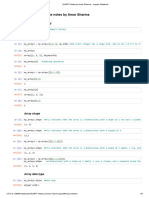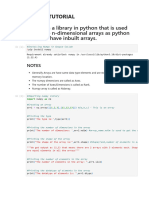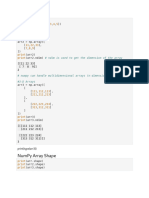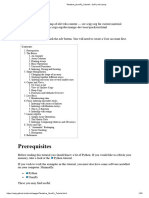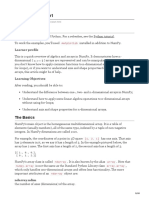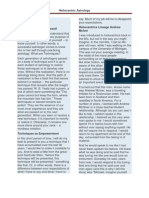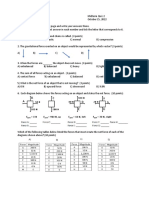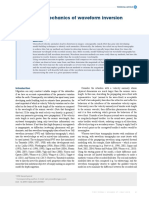0% found this document useful (0 votes)
50 views9 pagesNumPy Part-1
NumPy is a Python library that provides support for large, multi-dimensional arrays and matrices, along with high-level mathematical functions. It is preferred over Python lists due to its efficient storage and speed. The document also covers how to install NumPy, create arrays, and perform various operations such as reshaping and finding minimum or maximum indices.
Uploaded by
imbilalbaigCopyright
© © All Rights Reserved
We take content rights seriously. If you suspect this is your content, claim it here.
Available Formats
Download as PDF, TXT or read online on Scribd
0% found this document useful (0 votes)
50 views9 pagesNumPy Part-1
NumPy is a Python library that provides support for large, multi-dimensional arrays and matrices, along with high-level mathematical functions. It is preferred over Python lists due to its efficient storage and speed. The document also covers how to install NumPy, create arrays, and perform various operations such as reshaping and finding minimum or maximum indices.
Uploaded by
imbilalbaigCopyright
© © All Rights Reserved
We take content rights seriously. If you suspect this is your content, claim it here.
Available Formats
Download as PDF, TXT or read online on Scribd
/ 9






